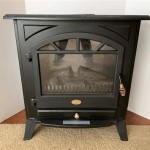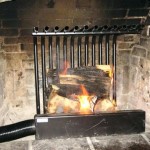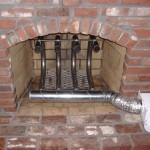Living Room Designs With Fireplace And TV: Balancing Focal Points
The living room often serves as the central gathering space in a home, designed for relaxation, entertainment, and socializing. Integrating a fireplace and a television into a cohesive design presents a challenge, as both elements naturally compete for visual dominance. Achieving a harmonious balance requires careful consideration of spatial layout, architectural features, and personal preferences. This article will explore various design strategies for integrating a fireplace and a television in a living room, addressing key considerations for creating a comfortable and aesthetically pleasing environment.
Prioritizing the Fireplace: A Traditional Approach
In many traditional living rooms, the fireplace is considered the primary focal point. This approach emphasizes warmth, ambiance, and a sense of timeless elegance. When prioritizing the fireplace, the television is often relegated to a secondary position, minimizing its visual impact.
Positioning the television off to the side of the fireplace is a common strategy. This arrangement acknowledges the fireplace as the central element, while still providing a functional space for viewing television. The television can be placed on a console table or mounted on the wall, ensuring a comfortable viewing angle from the seating area. The console table can also serve as additional storage space, contributing to the overall organization of the room.
Another approach involves integrating the television into a custom-built entertainment center that flanks the fireplace. This design allows for a more integrated and visually balanced appearance. The entertainment center can incorporate shelving, cabinets, and other storage solutions, effectively concealing media equipment and accessories. The fireplace can serve as the central element of the entertainment center, with the television positioned on one side and other decorative elements on the other, creating a symmetrical or asymmetrical composition.
Camouflaging the television when not in use is another technique for minimizing its visual impact. This can be achieved through the use of decorative screens, artwork that slides to reveal the television, or even hidden compartments within the entertainment center. These solutions ensure that the fireplace remains the primary focal point when the television is not in use, preserving the room's ambiance and aesthetic appeal.
Material choices play a crucial role in emphasizing the fireplace. Using natural stone, brick, or wood for the fireplace surround can create a sense of warmth and texture. The surrounding decor should complement the fireplace's style, enhancing its visual impact. Neutral colors, soft lighting, and comfortable furnishings can contribute to a relaxing and inviting atmosphere.
Furthermore, the placement of furniture should be oriented towards the fireplace, encouraging conversation and creating a sense of intimacy. A large sofa and comfortable armchairs can be arranged around the fireplace, fostering a cozy gathering space. Decorative elements, such as throw pillows, blankets, and artwork, can further enhance the room's warmth and personality.
Balancing Act: Achieving Visual Harmony
When neither the fireplace nor the television is intended to dominate the space, a balanced design approach is essential. This involves creating a visual equilibrium between the two elements, ensuring that each contributes equally to the room's overall aesthetic.
Mounting the television above the fireplace is a popular solution. This arrangement creates a single focal point, effectively integrating the two elements. However, it is crucial to consider the viewing angle and the height of the fireplace to ensure comfortable television viewing. The television should be mounted at a height that minimizes neck strain and provides an optimal viewing experience.
Another option is to place the fireplace and television on the same wall, side by side. This arrangement requires careful consideration of proportion and scale to achieve visual balance. A symmetrical layout, with identical flanking elements on either side of the fireplace and television, can create a sense of order and harmony. Alternatively, an asymmetrical arrangement can be used to add visual interest and dynamism.
The use of color and texture can also contribute to a balanced design. Choosing complementary colors for the fireplace surround and the television wall can create a cohesive look. Incorporating textured materials, such as wood, stone, or fabric, can add depth and visual interest to the space. The goal is to create a harmonious blend of elements that work together to create a visually appealing and comfortable environment.
Lighting plays a crucial role in creating ambiance and highlighting specific features. Using a combination of ambient, task, and accent lighting can enhance the room's overall aesthetic. Dimmable lights can be used to adjust the brightness and create a more intimate atmosphere. Spotlights can be used to highlight artwork or architectural details, while task lighting can be used to provide focused illumination for reading or other activities.
Furniture selection is also important in achieving a balanced design. Choosing pieces that are proportional to the size of the room and that complement the style of the fireplace and television can create a harmonious and inviting space. A comfortable sofa, armchairs, and a coffee table can be arranged to encourage conversation and relaxation. Decorative elements, such as throw pillows, blankets, and artwork, can further enhance the room's personality and style.
Concealing & Integrating: Modern and Minimalist Solutions
In modern and minimalist living rooms, the emphasis is often on clean lines, simplicity, and functionality. Integrating the fireplace and television into the design without disrupting the overall aesthetic requires innovative solutions that prioritize concealment and integration.
A popular approach is to use a minimalist fireplace design that seamlessly blends into the surrounding wall. Linear fireplaces, with their sleek and modern aesthetic, are often used in these designs. The fireplace can be recessed into the wall, creating a flush appearance and minimizing its visual impact. The television can then be mounted above the fireplace, creating a single, integrated focal point.
Another option is to use a hidden television lift mechanism that conceals the television when not in use. The television can be concealed within a cabinet or behind a panel, rising up or lowering down with the touch of a button. This solution allows for a clean and uncluttered aesthetic when the television is not in use, while still providing a functional entertainment space when needed.
Utilizing a projector and screen instead of a traditional television can also contribute to a minimalist aesthetic. The projector can be concealed within the ceiling or a cabinet, and the screen can be retracted when not in use. This solution offers a large viewing area without the visual clutter of a traditional television.
Color palettes and material choices are crucial in achieving a minimalist design. Neutral colors, such as white, gray, and beige, are often used to create a clean and uncluttered look. Smooth surfaces, such as glass, metal, and concrete, can further enhance the minimalist aesthetic. The use of natural light is also important, creating a bright and airy atmosphere.
Furniture selection should be carefully considered to maintain the minimalist aesthetic. Simple, functional pieces with clean lines are often preferred. Clutter should be minimized, and storage solutions should be incorporated to keep the space organized and uncluttered. Plants and artwork can be used to add visual interest and personality to the space, while still maintaining the overall minimalist aesthetic.
Sound systems are also an important consideration. Wireless speakers and soundbars can be used to provide high-quality audio without the visual clutter of traditional speaker systems. These solutions can be seamlessly integrated into the design, providing an immersive audio experience without compromising the minimalist aesthetic.
Ultimately, designing a living room with a fireplace and television requires careful planning and consideration of various factors. By prioritizing the fireplace, balancing the two elements, or embracing modern and minimalist solutions, one can create a harmonious and inviting living space that meets individual needs and preferences.

Tv And Fireplace In One Room Find The Perfectly Happy Spot For That Black Beast Form Design Tasteful Interiors Living Well

Living Room Layouts With Fireplace Tvs Direct Fireplaces

50 Inspirational Tv Wall Ideas Art And Design Feature Living Room Decor Fireplace With
Interior Designers Reveal The Mistakes You Re Making In A Living Room

11 Appealing Living Room Designs With A Fireplace

13 Impressive Living Room Ideas With Fireplace And Tv Lmolnar Contemporary Design Family

30 Modern Living Rooms With Fireplace And Tv Together Decor Snob

40 Best Fireplace Décor Ideas Mantel
Why A Focal Point Doesn T Always Need To Be Fireplace The Living House

Layout A Living Room With Tv Fireplace Florida Leather Gallery
Related Posts








